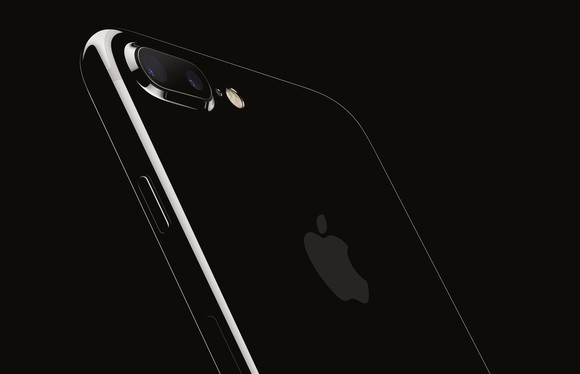On Sept. 12, Apple (AAPL 0.64%) unveiled three flagship smartphones: iPhone 8, iPhone 8 Plus, and iPhone X. The company talked up the host of technological improvements that it's bringing to the table with these devices relative to the prior-generation iPhone 7 and iPhone 7 Plus.
However, among the things that Apple didn't highlight during its keynote presentation or in the technical specifications it listed on its website are the cellular capabilities of the new phones.

Image source: Apple.
Apple didn't advertise upgraded modems
I strongly suspect that when the new iPhones are torn down by the likes of iFixit, we'll see a Qualcomm (QCOM 0.73%) Snapdragon X12 cellular modem in some models of the device and an Intel (INTC -0.38%) XMM 7480 in others.
Both these modems support peak download speeds of 600 megabits per second and peak upload speeds of 150 megabits per second. If those chips really do power these newly announced iPhones, then peak download speed is up nicely from the prior-generation iPhones (which could only support 450 megabit per second download speeds), while uplink speeds remain the same.
So, if Apple included faster modems in these new devices, why didn't it flaunt that during the keynote presentation or in its marketing materials?
Only Apple knows the reason that it didn't mention that, but here's my guess.
Competitive pressure
The Snapdragon X12 isn't Qualcomm's best available cellular modem. Qualcomm's currently shipping Snapdragon X16 modem offers peak download speeds of 1 gigabit (1,000 megabits) per second and peak upload speeds of 150 megabits per second.
The Snapdragon X16 is offered in both stand-alone form, as well as integrated into Qualcomm's Snapdragon 835 applications processor, which powers many of the Android-based flagships available today.
Qualcomm has been aggressively promoting devices with its gigabit LTE technology inside, and for good reason: To the extent that consumers care about cellular modem capabilities, Qualcomm's leadership in cellular modem technology is a valuable competitive advantage.
If Apple avoids explicitly highlighting the cellular capabilities of its new iPhones, then it's harder for Apple's competition -- that is, other premium smartphone makers -- to use Apple's own claims vis-a-vis cellular capability against it in their own marketing materials.
Does Apple close this gap going forward?
Since Apple sources cellular modems from both Qualcomm and Intel, the peak speeds that Apple can enable in its phones are limited to what the vendor with the weakest solution can offer.
That, in this case, would be Intel.
Now, Intel has been investing aggressively to try to narrow, if not close, the feature gap that exists between Qualcomm's best and its own best. For example, Intel's upcoming XMM 7560 modem supports category 18 speeds on the uplink and category 13 speeds on the downlink.
On paper, this should bring it to parity with Qualcomm's Snapdragon X20 LTE modem in terms of theoretical downlink/uplink speeds (though, of course, real-world performance can be an entirely different matter).
I could see Apple highlighting gigabit LTE speeds in the next iPhone, enabled by the fact that it can source capable components from both suppliers. Indeed, since Apple's 2018 iPhone models should compete with Android-based flagships with Snapdragon 845 processors (which should incorporate the Snapdragon X20 LTE modem), Apple's 2018 iPhones should be competitive in terms of advertised cellular capabilities with contemporary Android flagships.





